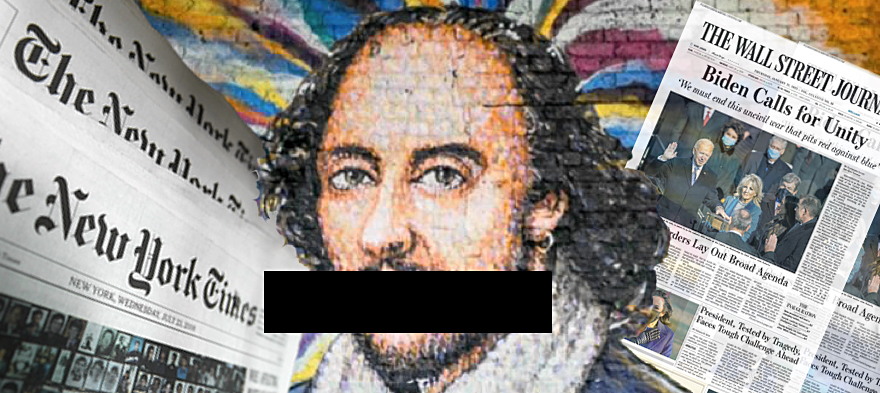
Sep 15, 2021 12:00:00 AM
It is no easy thing to help high school students become better critical thinkers. Especially now. The very act of engaging students in the events of the world and helping them to understand and evaluate the complexities of competing narratives has been termed “political” by a certain — and very vocal — faction of parents and school board members across the country. High school English teachers, in particular, have been criticized for introducing the kinds of theoretical lenses that help students to view the world with a more thoughtful and critical eye and to make important connections between history, language and the “texts” they read — both inside and outside of school.
Teachers are nervous and rightly so, as we have been widely accused of foisting our own values upon our students when we choose to engage them in thinking and reading about the world. [pullquote]“Shut up and teach,” is the underlying message, as if what we teach is some neutral fact or basic equation.[/pullquote] Like most teachers I know, I want to shout from the rooftops: It is just not that simple.
And here’s why: A few decades ago, we decided, as a nation, that most public education in America would be guided by some shared principles, which we call “standards.” In my discipline, English Language Arts, the standards moved ELA instruction away from a traditional set of literary texts to be taught and toward a set of critical skills to be acquired. What this means is that the English classes of old are no longer. ELA teachers are now required to devote significant time to helping students read and write about a myriad of non-fiction texts, as well as literary texts.
This shift reflects the shared value that our students are able to read critically and communicate effectively across genres and situations. In this country, [pullquote position="right"]we want people with high school diplomas to be able to read a little Shakespeare and The Wall Street Journal.[/pullquote] We want our students to understand the complex issues and events of our time and to be able to communicate effectively in the many contexts in which they will participate. We use all kinds of “texts” to accomplish this highly ambitious goal — and most of us believe that the real world should be one of those texts.
But, as everyone should know by now, the real world is not an easy read.
Context and discernment don’t come easily to most adults, and even less easily to high school students. This is where good teaching comes in. And to get to that, we need to ask ourselves a few questions:
Critical literacy is a term that I have been thinking and reading about a lot lately and one that might be useful in reframing the conversation. Although the term does not have a set definition or a normative history, according to some scholars, it should be thought of as “a way of being and doing.”
In essence, critical literacy is a perspective for teaching across subject areas and grade levels; its central tenet is that the best literacy practices are accompanied by deep critical thinking not only about the perspective of the text, but also about our own perspective, as well as the socio-cultural conditions in which that text was produced and in which we are living and learning. At the very least, [pullquote]critical literacy can add a crucial dimension to all literacy instruction; at its best, it can be transformative and can help students confidently think and act in ways that improve the world.[/pullquote]
As I think about the year ahead and the students I will meet in my 12th grade English classes, I intentionally ignore the conversation on the front page of the New York Times — a conversation in which misunderstanding has run rampant and which I do not even want to name in this post. Instead, I want to advocate for a reframing — a re-imagining if you will — of the way we think and talk about the work ahead. Critical literacy as a way of being and doing in our classrooms — and perhaps as a term that teachers can use to reclaim the conversation.
Suzanne Caines has been teaching high school English in public school settings in New Jersey for 34 years. She grew up on the West Coast, graduated from the University of Oregon and later earned a masters at Montclair State University, where she wrote her graduate thesis on using mindfulness and meditation to improve learning conditions in high school classrooms. She currently resides in New York City with her husband and has one grown daughter and three grown step-children. Her bi-weekly education blog can be found on her website teachingandbeing.com.
The story you tell yourself about your own math ability tends to become true. This isn’t some Oprah aphorism about attracting what you want from the universe. Well, I guess it kind of is, but...
If you have a child with disabilities, you’re not alone: According to the latest data, over 7 million American schoolchildren — 14% of all students ages 3-21 — are classified as eligible for special...
The fight for educational equity has never been just about schools. The real North Star for this work is providing opportunities for each child to thrive into adulthood. This means that our advocacy...
Your donations support the voices who challenge decision makers to provide the learning opportunities all children need to thrive.
Ed Post is the flagship website platform of brightbeam, a 501(c3) network of education activists and influencers demanding a better education and a brighter future for every child.
© 2020–2024 brightbeam. All rights reserved.
Leave a Comment